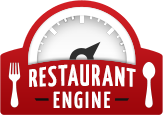10 Steps to Restaurant Marketing

All good things begin with a well thought out plan.
The competition in the restaurant industry is fierce with each of your neighboring restaurants fighting for a similar customer.
To be successful, you want to have a powerful strategy in place that utilizes several areas of marketing. The ultimate goal is getting the word out about your great food, ambiance, and service, and creating loyal diners who spread the word about your restaurant.
Marketing means more than cobbling together a website and social media platform. Good marketing means creating a marketing plan and strategy with a systematic approach that also works with your website and social platforms. (tweet this)
To help you, we’ve put together our top 10 steps to restaurant marketing to increase your sales.
#1: Create an Objective and Goals
Before you create your marketing plan, ask yourself what you want. The first step to restaurant marketing is assessing where you are and looking at where you want to go.
Your objectives may look something like this:
- Attract new customers
- Retain current customers
- Increase the average ticket
If your objective is all of the above, you can create marketing strategies around each one. We recommend working on one at a time so you can put all your effort into one before adding another.
Let’s say you pick the objective of customer retention. Once you’ve picked it, you can then set about creating goals for that objective. This is how you know you’ve reached it. It’s your form of measurement.
Each goal to meet your objective should be specific, measurable, attainable, relevant, and timely.
An example of goals might be:
- Begin a loyalty program.
- Enroll 100 new members in the first quarter.
- Hold loyalty events.
- Bring in 500 loyalty customers by years’ end.
#2: Set a Budget
Some restaurant owners think it’s better to set your budget after you have your plan. But what happens when you create a marketing plan only to find out you don’t have the budget to support it?
This is why you want to set your budget before you create your marketing plan. Your budget comes before the plan, so you know how much money you have to spend.
When setting your budget, you can consider your top line revenue. Then, multiply that number by three percent. This is the average amount most restaurants spend on marketing. Feel free to go higher if you think your budget can handle the increase.
As you set the budget and add it to your marketing plan, you want to make sure to revisit this budget often, so you keep within it.
#3: Identify Your Target Market
All good restaurant marketing begins with research. Without it, you are flying blind. (tweet this)
You need to identify your target and know what your ideal customer looks like. Who are you trying to reach, and will they be receptive to your offerings?
Consider what sets you apart. For example, if you’re a fine dining establishment, your market isn’t the family crowd. Know what your audience wants from a restaurant to ensure you are it.
In addition, consider what makes you unique. For example, perhaps you own a seafood restaurant, and your décor speaks to the ocean. You might have saltwater tanks with ocean life. You can advertise this to draw customers in.
Another thing you can do is set your “buyer personas.” These are caricatures of your ideal customers in your target audience. Create a couple, and then you can frame your marketing strategy around each demographic.
To do this, think of your ideal customer, their age, gender, job title, geographic area, and interests. From this, you can determine what you need to do to attract them.
In the end, you can build a strategy to meet the needs of each persona or customer segment.
#4: Ask Why
This is one of the most important questions in marketing. If you can answer why a person would want to eat in your restaurant, then you can cater to them.
The why helps you understand your customer, what they’re looking for, and how you can provide it to them.
#5: Know Your Unique Value Proposition
What do your customers want, and how can you give it to them?
This is where you think about what keeps your customers coming back. What do they feel about your restaurant?
This proposition involves your unwritten promises to your customer. For example, you promise to always provide courteous service, you promise delicious food, and you will deliver it in a timely fashion.
These could be your value propositions. Once you know them, you can write a statement. Use this in your marketing plan and employee training.

Organize all digital marketing and traditional marketing in one plan.
#6: Optimize your Website
Your website is the center point of your marketing. If you don’t have one, it’s time to get one. If yours isn’t mobile friendly, fix it. Then, optimize your website on an ongoing basis.
#7: Make a Plan for Online Reviews
Don’t forget to include online reviews in your marketing plan. It should be one of your goals to get more of them.
Most customers aren’t willing to try a restaurant with a one or two-star review, let alone none. The more quality four and five-star reviews you have, the better.
Make sure you have plenty of reviews on Google, Facebook and Yelp.
#8: Leverage Social Media
This is integral to your marketing plan.
Pick the platforms your audience is using and hire someone to take care of your posting and any advertising to ensure it’s done on a daily basis.
#9: Add Loyalty Rewards
Once you’ve done your part to get customers to your restaurant, you now want to keep them coming back.
A great way to do this is through a loyalty rewards program. Repeat customers are great for business, and this is how you reach them.
#10: Train Your Staff
One of the most, but often forgotten, parts of your marketing plan is training your staff in the art of customer service.
You can do all the marketing in the world, but if your guests have a bad service experience, they won’t be back.
Great customer service begins with your employees. Treat your staff well, and in turn, they’ll treat your customers well.
Teach your staff what to say and how to say it. Make sure they know how to deal with conflict. Invest in ongoing customer service training.
Final Thoughts
Marketing takes planning that ends in a strategy. To attract new customers and retain current ones takes time and effort, but with a little bit of planning on the front end, you’ll be well on your way to success.
Once you’ve put your plan to paper, have a meeting and let your staff in on the plan. They are integral to helping you meet some of your goals.
Finally, measure your marketing. Do this on an ongoing basis so you know what’s working and what isn’t. Marketing isn’t static, and you want to be on top of it.
It’s okay to change course. In fact, it’s expected. You might do more of what works and less of what doesn’t.
Your marketing plan is an investment in the future of your restaurant. Do it well, and you’ll see success.
At Restaurant Engine, not only do we create great, responsive websites, but you can count on us to create a website that drives business to all your restaurants and edges you above the competition by using mobile-friendly design with a terrific user experience. Ready to take the plunge and create a website with an online menu, blog and beautiful photos? Get your free website consultation today!
Image: rawpixel and chuttersnap on Unsplash


Leave a Reply